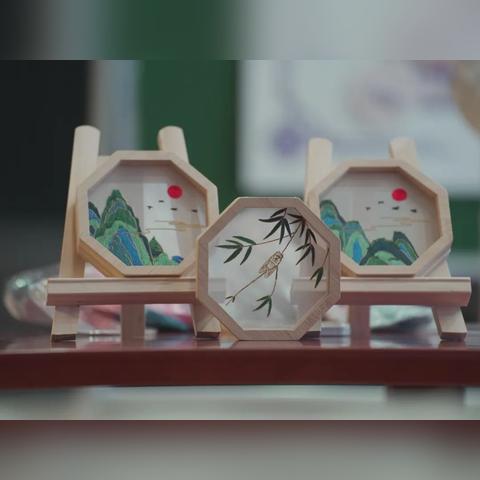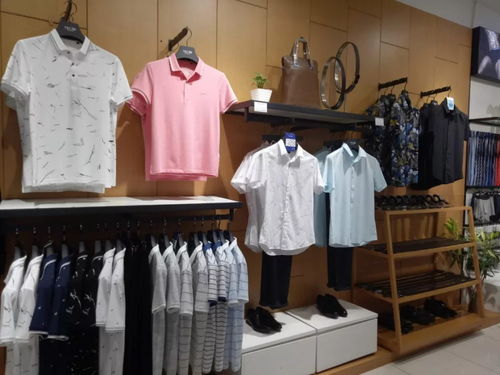The Global Fabric of Innovation:East-West Textile Trade
: The Global Fabric of Innovation: East-West Textile Trade,Abstract: This study explores the interconnected fabric of innovation across East and West through the lens of textile trade. It highlights the role of globalization, technological advancements, and cultural exchanges in fostering innovation in the textile industry. By examining the historical evolution of textile trade between East and West, the paper reveals how these sectors have evolved to become integral parts of each other's economic landscapes. Furthermore, it discusses the challenges and opportunities presented by this interdependence, emphasizing the importance of sustainable practices and ethical considerations in the global textile industry. The study concludes by advocating for a more collaborative approach towards innovation, one that recognizes the shared responsibility of both East and West in shaping the future of textile trade.
Introduction: In the world of textiles, East and West meet in a fascinating dance of cultural exchange and economic growth. East Asia, particularly China, Japan, and South Korea, has long been synonymous with high-quality, durable textiles that have found their way into the global market. On the other side of the globe, Europe and North America have been at the forefront of innovation in textile technology, leading the way in sustainable materials and advanced manufacturing processes. Today, East-West textile trade is not just about the exchange of goods; it's a testament to the power of collaboration, creativity, and progress.
East-West Textile Trade Overview: The textile industry is one of the most dynamic sectors in the global economy, with East Asia leading the charge in terms of production volume and value. According to data from the World Economic Forum, East Asia accounted for over 60% of global textile output in 2019. This is due to a combination of factors, including strong domestic demand, efficient factories, and favorable policies. In contrast, Europe and North America have historically focused on luxury and high-end fashion, but this is changing as consumers become more environmentally conscious and seek out sustainable options.
Cultural Connections: At the heart of East-West textile trade lies a rich cultural exchange that spans centuries. From China's silk weaving techniques to Japan's kimono designs, textiles have played an essential role in shaping societies around the world. Today, these traditions continue to influence modern design and production methods. For example, Japanese fabrics are renowned for their softness and durability, while Chinese textiles are known for their intricate patterns and vibrant colors. These cultural influences have led to unique blends of styles across the globe, creating a diverse and exciting landscape for textile designers and manufacturers.

Technological Advances: As the textile industry continues to evolve, East-West collaboration has led to significant technological advancements. For instance, the use of computer-controlled machines in China has enabled the creation of high-quality garments at lower costs than before. Meanwhile, European companies like H&M and Zara have adopted innovative manufacturing processes that reduce waste and increase efficiency. These technological advancements have not only improved product quality but also opened up new markets for both East and West.
Sustainable Practices: Today's consumers are demanding more from textile products than ever before. They want to know where their clothing comes from, how it was made, and whether it's ethically sourced. As a result, East-West textile trade is increasingly focusing on sustainable practices. China, for example, has set ambitious goals to reduce its carbon emissions by 2030 and aims to achieve carbon neutrality by 2060. Similarly, European companies are investing in renewable energy sources and eco-friendly production methods to meet consumer demands for sustainability.
Case Study: One example of how East-West textile trade is driving innovation is the collaboration between Italian and Japanese textile brands. In 2018, the two companies launched a joint venture called "EcoText," which produces organic cotton clothing using cutting-edge technology and sustainable farming practices. EcoText's mission is to create stylish and ethical fashion products that respect the environment and promote fair trade. By working together, the brands have created a new category of eco-friendly textiles that appeal to a growing number of consumers who prioritize sustainability.
Conclusion: East-West textile trade is not just a matter of supply and demand; it's a reflection of our shared human experience and aspirations for a better future. As we look to the future, it's clear that collaboration will continue to be key to unlocking new possibilities in the textile industry. Whether it's through technological advancements or sustainable practices, East and West are working together to create a brighter, more connected world for all.
大家好,今天我们将以东义纺织品为主题,探讨其在纺织品行业中的地位、产品特点以及实际应用案例,希望通过这篇文章,让大家对东义纺织品有更深入的了解。
东义纺织品概述
-
东义纺织品行业地位 东义纺织品作为一家知名的纺织品企业,以其高品质、高附加值的产品赢得了市场的广泛认可,其产品涵盖了各种类型的纺织品,包括但不限于床上用品、服装辅料、家居装饰等。
-
东义纺织品产品特点 东义纺织品注重产品的品质和环保性,采用优质原材料,注重细节设计和创新,其产品风格多样,满足不同消费者的需求,东义纺织品还注重产品的可持续性和环保性,致力于打造绿色、环保的纺织品。
东义纺织品案例分析
-
床上用品 以某品牌床上用品为例,展示东义纺织品的品质和特点,该品牌床上用品采用高品质的棉质面料,柔软舒适,触感良好,该品牌注重细节设计和创新,使用独特的图案和设计元素,打造出独具特色的床上用品。
-
服装辅料 以某服装辅料为例,展示东义纺织品在服装行业中的应用,该服装辅料采用高质量的纤维材料,经过特殊工艺处理,具有优良的耐磨、耐洗、耐高温等性能,该辅料被广泛应用于服装制作中,提高了服装的品质和外观效果。
东义纺织品的应用领域
-
家居装饰 东义纺织品在家居装饰领域有着广泛的应用,无论是客厅、卧室还是厨房、浴室等场所,都可以看到东义纺织品的身影,其高品质、高附加值的特性使得其在家居装饰中具有很高的市场竞争力。
-
服装行业 在服装行业中,东义纺织品也发挥着重要作用,其高质量的纤维材料和独特的图案设计元素,使得其在服装制作中具有很高的品质和外观效果,东义纺织品还注重产品的可持续性和环保性,符合现代消费者的绿色消费理念。
东义纺织品的市场前景
随着人们对生活品质的要求不断提高,东义纺织品的市场前景越来越广阔,东义纺织品将继续注重产品的品质和环保性,不断创新和升级产品,满足消费者的需求,东义纺织品还将继续拓展应用领域,为人们的生活带来更多的便利和舒适。
东义纺织品以其高品质、高附加值的产品赢得了市场的广泛认可,其在纺织品行业中的地位越来越重要,应用领域也越来越广泛,东义纺织品将继续注重产品的品质和环保性,不断创新和升级产品,为人们的生活带来更多的便利和舒适,我们也期待东义纺织品能够继续为行业的发展做出更大的贡献。
Articles related to the knowledge points of this article:
The Strange Tale of the Textiles Towers Ghostly Residence
Exploring the Rich Tapestry of Yunnan,Chinas Cultural Textiles
Wuxis Textile Industry:A Dynamic Landscape of Innovation and Sustainability
The Fabric of Heritage:Crafting the Future with Shaoxings Textiles



